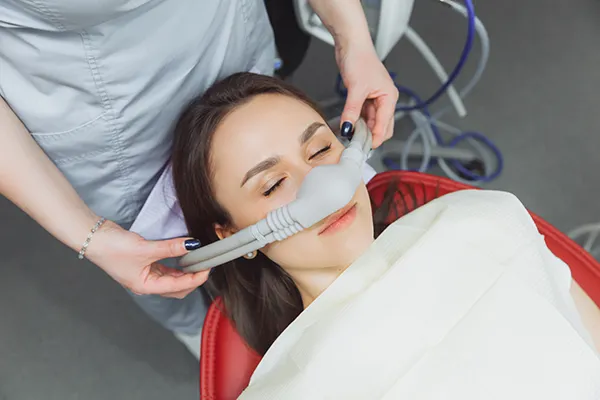 Performing a dental implant surgery involves taking into account numerous factors, including the bone density in the place the implant has been positioned.
Performing a dental implant surgery involves taking into account numerous factors, including the bone density in the place the implant has been positioned. Generally, the upper jaw is a tricky place for a dental implant since it is narrow and is very close to the sinus cavity. Plus, if you have ever had periodontal disease, the bone density in that place may have deteriorated. If this is the case with you, Mountain State Oral and Facial Surgery may recommend a sinus lift surgery for you.
What is a Sinus Lift?
A sinus lift surgery, also called a sinus lift augmentation, is a minor surgery that helps increase the bone density in your upper jaw, particularly the area between your upper molars and premolars. Above this area is the sinus cavity.
Sedation Options
This procedure is done under local anesthesia. We may also administer a sedative if you suffer from dental anxiety.
Sinus Lift Process
A small incision is made in your upper gum to expose your jawbone. We will cut out a tiny flap of your bone and lift it into the sinus cavity. We will then raise the sinus floor membrane and pack a bone grafting material in that space to boost new bone development. The grafting material may be taken from your own body or a human, animal, or lab-made source. Once we have filled the space adequately, we will suture the incision close and allow it to heal.
The healing process can take anywhere between four to 12 months depending on the health of your jaw. People who undergo a sinus lift surgery have a better chance of a successful dental implant surgery.

What Happens After a Sinus Lift?
After a sinus lift surgery, you may experience mild pain and some swelling in the area where the graft took place. However, this discomfort can easily be managed by over-the-counter painkillers. You may also bleed slightly from the mouth and the nose in the following days; however, these issues will resolve quickly.
Followup
After a sinus lift procedure, we advise that you avoid coughing or sneezing. Since the bone grafting material is so close to the sinuses, these actions can dislodge the grafting material and break your stitches. We may also prescribe you a saline spray to keep your nose moist as well as antibiotics and antimicrobial mouthrinse to eliminate any chances of infection.
FAQs
What is a sinus lift surgery?
A sinus lift surgery, also known as sinus augmentation, is a procedure that increases bone density in the upper jaw, specifically in the area of the molars and premolars. This is done to create a stable foundation for dental implants by lifting the sinus membrane and adding bone grafting material.
Why is a sinus lift necessary for dental implants?
A sinus lift is necessary when the upper jaw lacks sufficient bone density to support a dental implant. This could be due to bone loss from periodontal disease, tooth loss, or the naturally thin bone structure of the upper jaw near the sinus cavity.
What can I expect during a sinus lift procedure?
During a sinus lift procedure, an incision is made in the gum to access the upper jawbone. The sinus membrane is gently lifted, and bone grafting material is added to promote new bone growth. The area is then sutured, and the healing process begins, typically taking 4 to 12 months.
What is the recovery process like after a sinus lift?
Recovery after a sinus lift typically involves mild swelling, discomfort, and light bleeding from the mouth or nose, which can be managed with over-the-counter painkillers. Patients are advised to avoid sneezing or coughing to prevent disturbing the bone graft material. Complete healing can take several months.
What precautions should I take after a sinus lift surgery?
After a sinus lift, you should avoid sneezing, coughing, or blowing your nose to prevent dislodging the bone graft material. Follow your oral surgeon's instructions, use prescribed saline spray to keep your nose moist, and take any antibiotics or antimicrobial mouth rinses as directed to minimize infection risk.
Is sinus lift surgery painful?
Sinus lift surgery is not typically painful as it is performed under local anesthesia, and sedation is available for patients with dental anxiety. Post-operative discomfort is mild and can be managed with pain relievers and proper aftercare.
Sinus Lift for Implants
If you have any questions, schedule an appointment with our experts at Mountain State Oral and Facial Surgery, or give us a call at (681) 317-7011 to get more information.

